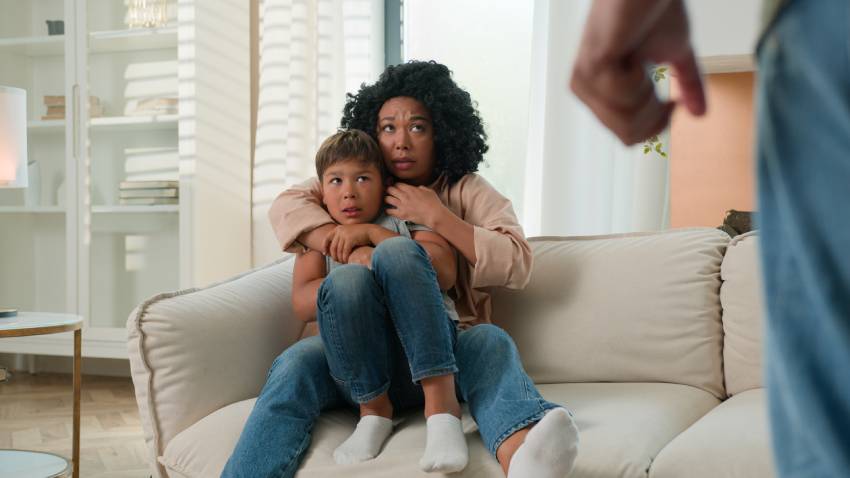Here’s the uncomfortable truth: how domestic violence affects child custody California isn’t just about legal technicalities, it’s about kids who’ve seen things no child should see. When domestic violence enters custody disputes, everything changes. Courts stop playing nice with “both parents deserve equal time” and start asking harder questions about safety.
At Westover Law, our family law attorneys in California work with experienced domestic violence lawyer professionals who understand these cases are about protecting kids and the parents trying to keep them safe.
Understanding the Definition of Domestic Violence
What is domestic violence in California? It’s way more than what you see in movies. Sure, physical abuse counts—hitting, slapping, shoving. But California law recognizes that abusers have a whole toolkit of control tactics that don’t leave bruises.
The definition of domestic violence in California includes emotional abuse that tears people down from the inside. Constant criticism, isolation from friends and family, threats that keep victims walking on eggshells. Sexual abuse, including marital rape. Economic abuse where one partner controls all the money or prevents the other from working.
Then there’s the modern stuff—using technology to stalk and control. GPS tracking, social media harassment, using shared accounts to spy on someone’s every move.
Here’s what courts understand now: domestic violence follows patterns. It escalates. And kids absorb every bit of it, even when they’re not the direct target. Witnessing domestic violence messes with children’s development and their understanding of what relationships should look like. That’s why how domestic violence affects child custody California continues to play a critical role in shaping protective custody arrangements.
How California Child Custody Laws Address Domestic Violence
California child custody laws don’t mess around when domestic violence is involved. The law creates a “rebuttable presumption” against giving custody to abusive parents. If you’ve committed domestic violence in the past five years, the court assumes giving you custody would be bad for the kids.
Can you overcome that presumption? Maybe. But you’ll need to prove you’ve completed a batterer’s intervention program, stopped using drugs or alcohol, haven’t committed more violence, and that custody would be in the child’s best interests. Courts aren’t easily convinced.
The law recognizes that sometimes the “maintain relationships with both parents” goal has to take a backseat to keeping kids safe. Courts can order supervised visitation, require exchanges in public places, or eliminate contact entirely.
Safety planning becomes part of custody arrangements. Courts might order that parents communicate only through third-party apps or require that one parent never comes to the other’s home or workplace. These safeguards show how domestic violence affects child custody California by shifting focus to child safety over parental rights.
How to Prove Domestic Violence in a California Child Custody Dispute
Proving domestic violence in court in California requires documentation that shows the pattern of abuse. Police reports carry serious weight because they’re created by trained, neutral third parties. When cops respond to domestic violence calls, they document everything—the scene, injuries, statements, arrests.
Medical records matter too. Emergency room visits, doctor’s appointments, mental health treatment—all can support your case. Medical professionals know what domestic violence looks like and often document their observations.
Photos of injuries, damaged property, or threatening messages provide concrete evidence. Witness testimony from people who saw the abuse can strengthen your case—friends, family, neighbors, teachers, healthcare providers who noticed something was wrong.
Keeping records helps establish the pattern. Journals, calendars, documentation of incidents over time. Courts understand that domestic violence isn’t usually one bad night—it’s ongoing behavior designed to control.
Protective Orders and Their Impact on Child Custody and Visitation
Protective orders in California provide immediate legal protection while custody issues get sorted out. Temporary restraining orders can be obtained quickly when there’s immediate danger, typically lasting a few weeks and including protections for both the victim and the children.
Domestic violence restraining orders provide longer-term protection—up to five years. These orders can include detailed custody and visitation provisions, often incorporating safety measures like supervised visits or safe exchange locations.
The impact of domestic violence on custody disputes in California often depends on protective order terms. Courts use restraining orders as frameworks for developing custody arrangements that prioritize safety.
Violations of protective orders have serious consequences. They demonstrate continued disregard for court orders and safety, often resulting in criminal charges and custody restrictions.
When how domestic violence affects child custody California becomes part of your legal reality, having strong evidence and experienced legal support is crucial. At Westover Law, we know these cases are about protecting families.
If you’re dealing with domestic violence in a custody case, don’t handle this alone. Our family law attorneys in California are ready to help. Contact us at 951-894-8440 to learn how we can help achieve custody arrangements prioritizing safety.



